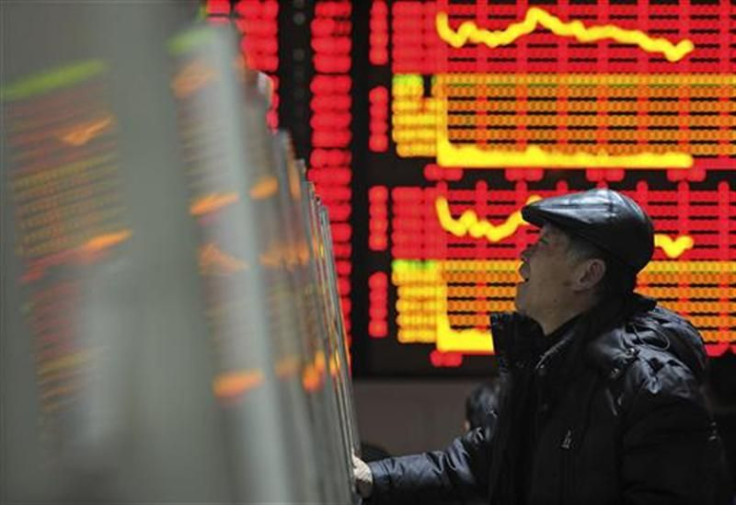Weekly Roundup: Asian Stocks Rise On Upbeat US Data

Asian markets rose in the week with investor sentiment turning positive following the encouraging economic indicators from the U.S.
Japan's Nikkei 225 Stock Average gained 1.3 percent and closed at 9051.22. South Korea's Kospi Index rose 1.4 percent and closed at 1918.72.
Trading in the U.S. markets was affected Monday and Tuesday due to Superstorm Sandy hitting the country’s east coast.
In Asian markets, market participants were encouraged as the U.S. jobless claims fell more than expected, indicating a revival of the economic growth. According to the data reported Thursday by the Labor Department, the initial jobless claims fell to 363,000 in the week ending Oct. 27, down from 369,000 in the previous week. Meanwhile, according to the Automatic Data Processing’s National Employment Report released Thursday, employers added 158,000 jobs in October, above the expectation of 135,000.
Investor sentiment was lifted as the data released Monday by the Ministry of Economy, Trade and Industry showed that Japan’s retail sales rose 0.4 percent in September compared to the same month last year, down from 1.7 percent in August.
However, according to the data released Tuesday by the Ministry of Economy, Trade and Industry, industrial production that measures the change in the total inflation-adjusted value of output produced by manufacturers, mines and utilities fell 4.1 percent in September, down from a 1.6 percent decrease in August.
On a positive note, Japan's monetary base rose in October compared to that in the previous month, indicating that the monetary easing policies were leading to an increase in the amount of currency in circulation, which in turn results in reviving economic growth. According to the data released Friday by the Bank of Japan (BoJ), the country’s monetary base advanced to 10.8 percent in October, up from a 9 percent rise in September.
Earlier this week, the BoJ announced more monetary easing policies with the asset purchase program (APP) by about 11 trillion yen ($138 billion). This brings the total size of the APP to about 91 trillion yen, of which 25 trillion yen is in loans and the remaining 66 trillion yen is for asset purchases.
Meanwhile, according to the data released Tuesday by the Bank of Korea, the current account surplus, measuring the difference in value between exported and imported goods, services and interest payments during the reported month, fell to $3.09 billion in September down from $4.31 billion in August.
Also the data released Wednesday by the Korea National Statistical Office show that industrial production, which measures the change in the total inflation-adjusted value of output produced by manufacturers, mines and utilities, rose 0.8 percent in September up from a 0.9 percent decrease in August on a seasonally adjusted basis.
Hong Kong's Hang Seng Index marginally advanced 2.6 percent and closed at 22111.33. China's Shanghai Composite Index climbed 2.5 percent and closed at 2117.05.
China's manufacturing activity expanded in October after two months of contraction, giving the indication that the second-largest economy is reviving its growth momentum. The data released Thursday by the China Federation of Logistics & Purchasing showed that the Purchasing Managers' Index rose to 50.2 in October from 49.8 in September. Significantly, the index moved into the expansion zone, a reading above 50. The expansion of the manufacturing activity should allay fears of a sharp retardation in the Chinese economy.
Meanwhile, according to the HSBC Purchasing Managers Index released Thursday, the final reading of China’s PMI, a measure of the nationwide manufacturing activity, rose to 49.50 in October from 47.9 in September. However, since the PMI is below 50, it indicates that the manufacturing economy is declining.
India's BSE Sensex was up 0.7 percent and closed at 18755.45.
On Tuesday, the Reserve Bank of India (RBI) kept its key policy rate unchanged at 8.0 percent but cut the cash reserve ratio to 4.25 percent from 4.5 percent. The RBI noted that persistent inflationary pressures and the fiscal and current account deficits constrained its ability to ease policy.
The HSBC Purchasing Managers Index released Thursday showed that the reading of India’s PMI, a measure of the nationwide factory output and operating conditions in the manufacturing sector, rose to 52.9 in October from 52.8 in September.
Meanwhile, Wipro Ltd, India’s third largest IT service provider, reported that its net profit in the second quarter rose to 16.11 billion rupees ($300 million), up from 13.01-billion rupees for the same period the earlier year.
Major Gainers
Shares of Tata Motors rose 3.29 percent. Shares of Bajaj Auto gained 6.19 percent and those of Wipro Ltd advanced 8.57 percent.
© Copyright IBTimes 2025. All rights reserved.





















